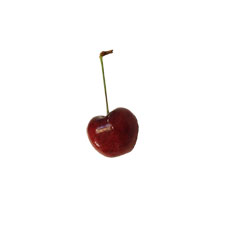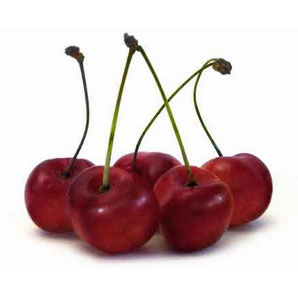Black Cherry Aphid
Beginner
This pest affects:
 |
 |
 |
Scientific Name
Myzus ceras
Identification
Egg
- Shiny black, oval
- Less than 1mm long
- Shiny and amber through various shades of dark brown to black
- Smaller but are otherwise identical to wingless adults
Adults
- Soft-bodied insects, 3.2 mm long
- Winged and wingless forms
Damage
- Feeding causes curling and stunting of the leaves and growth distortions in the stem on sweet cherry but not on sour cherry
- Leaves form compact bundles visited by ants
- Colonies are found on undersides of leaves of growing shoots, except when present in very high densities
- Extension growth of shoots is often reduced and blossoms may be damaged
- Can cause reduction in fruit size
- Heavy infestations may stunt young trees
- Reduce quantity and quality of crop on mature trees by stunting tree growth and vigour
- High populations may limit fruit set in the following year
- When abundant, aphids excrete large amounts of honeydew which supports the growth of a black sooty fungus that can cause scorching of leaves
Often Confused With
Glyphosate or 2,4-D drift – no insects present
Period of Activity
April-September.
Scouting Notes
Examine trees during and shortly after bud break. Once leaves curl, the aphid is more difficult to reach with insecticides.
When densities of aphids are low only a few leaves per shoot will be infested. As the populations increase, the older leaves of the shoot will also support aphid colonies so that the proportion of infested leaves on a shoot will increase.
Monitor for the presence of predators in aphid colonies: lady bird beetles and their larvae, syrphid (hover) flies, lacewing larvae.
Threshold
There are no established thresholds.
Advanced
This pest affects:
 |
 |
 |
Scientific Name
Myzus ceras
Identification
Egg
- Shiny black, oval
- Less than 1mm long
- Shiny and amber through various shades of dark brown to black
- Smaller but are otherwise identical to wingless adults
Adults
- Soft-bodied insects, 3.2 mm long
- Winged and wingless forms
Damage
- Feeding causes curling and stunting of the leaves and growth distortions in the stem on sweet cherry but not on sour cherry
- Leaves form compact bundles visited by ants
- Colonies are found on undersides of leaves of growing shoots, except when present in very high densities
- Extension growth of shoots is often reduced and blossoms may be damaged
- Can cause reduction in fruit size
- Heavy infestations may stunt young trees
- Reduce quantity and quality of crop on mature trees by stunting tree growth and vigour
- High populations may limit fruit set in the following year
- When abundant, aphids excrete large amounts of honeydew which supports the growth of a black sooty fungus that can cause scorching of leaves
Often Confused With
Glyphosate or 2,4-D drift – no insects present
Biology
BCA overwinters as an egg on the bark of small branches. The eggs start to hatch as soon as the buds begin to open with the young female aphids moving into the buds to feed on any exposed foliage. Within three to four weeks, the wingless female aphids rapidly establish colonies on the new growth by giving live birth parthenogenitically to more wingless females. Two or three generations are usually produced on cherry during the season. By mid-summer (early July), winged females develop and migrate to alternate hosts, mainly of the mustard family , but a few aphids will remain on cherry during the entire season. Several generations are produced on the alternate hosts. In the fall, usually in September and October, winged males and females fly back to the cherry orchards to mate and lay the overwintering eggs.
Period of Activity
April-September.
Scouting Notes
Examine trees during and shortly after bud break. Once leaves curl, the aphid is more difficult to reach with insecticides.
When densities of aphids are low only a few leaves per shoot will be infested. As the populations increase, the older leaves of the shoot will also support aphid colonies so that the proportion of infested leaves on a shoot will increase.
Monitor for the presence of predators in aphid colonies: lady bird beetles and their larvae, syrphid (hover) flies, lacewing larvae.
Threshold
There are no established thresholds.
Management Notes
Avoid excessive watering which, together with excessive nitrogen applications, produces flushes of succulent growth.
If the orchard has a history of damage and aphids are found, BCA is more easily controlled when small and exposed.
Management with insecticides: Insecticides are used to control black cherry aphids in commercial orchards. See OMAFRA Publication 360, Fruit Crop Protection Guide.
 |
Chapter 5 - Sour Cherry Calendar: Recommendations for aphids at Special Sprays (aphids). |
 |
Chapter 5 - Sweet Cherry Calendar: Recommendations for black cherry aphid at Petal Fall |
Early season establishment of lady beetles, lacewings, syrphid flies, soldier beetles and predaceous bugs is important for biological control to suppress black cherry aphid populations below damaging levels.
Some information included above excerpted from;










